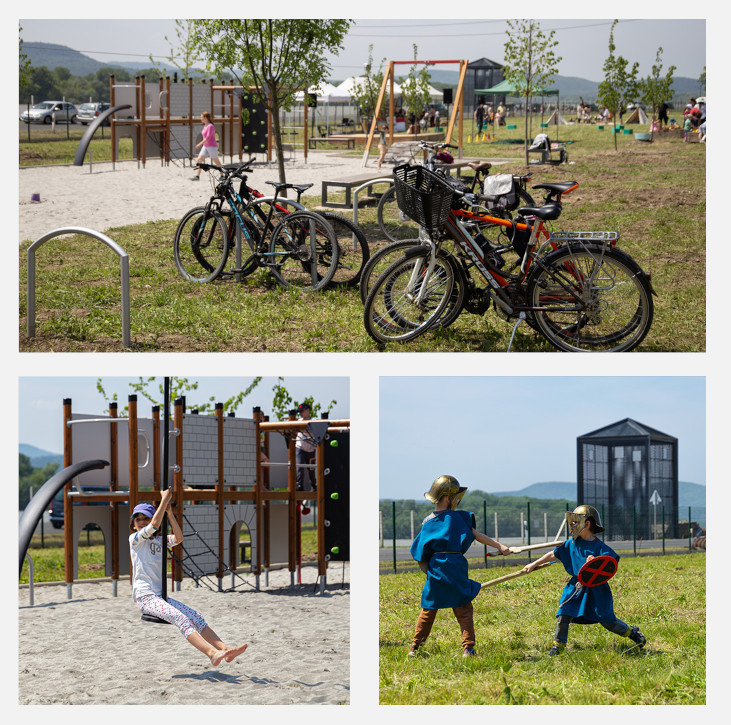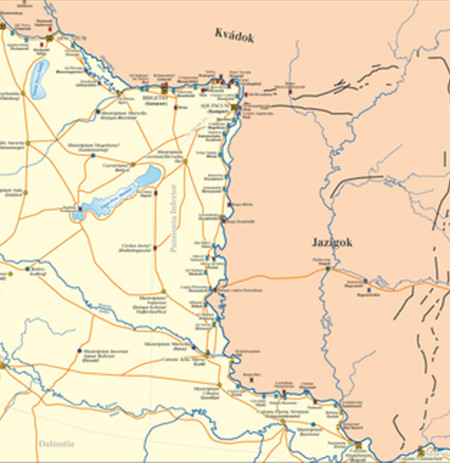Limes
THE WATCHTOWER
To the east of Verőce, next to the 2nd road, on the banks of the Danube, there are the ruins of a Roman-era small fort, which as a fortified port was one of the important links in the border defense of the Danube Bend in the 4th century. The walls of the harbor fortress, which were excavated in the 1930s, have recently come back to life to promote the former glory of the Roman Empire, offer recreation and a real archaeological experience trip to the people of the 21st century.
Playground and walkway
Verőce
The harbor fortress can be reached from Verőce via a bicycle path or a cozy pedestrian walkway built parallel to it. From the eastern border of Verőce, the newly created promenade runs along an avenue lined with walnut trees, which, in addition to the beauty of the natural environment, offers resting places and cultural experience points for those who choose the footpath.

Exhibition
VISITOR CENTER - EVENT SPACE
At the end of the road, visitors arriving on foot, by bicycle or by car are greeted not only by the remaining walls of the former Roman fort and one of the corner towers built as a sign. In the renovated old transformer house, an exhibition awaits those interested, which invites you on an exciting journey through time to the borderland of the Roman Empire and the mysterious ancient past of Verőce.
Approach
Verőce
The Solva 38 Roman Watchtower is located next to highway 12 in front of the Verőce settlement. Visitors arriving by car can use the parking lots next to the road. The branching off of highway 12 from the direction of Budapest on highway 2 or the M2 expressway is the shortest. The latter is a toll road section, so a Pest County sticker or a valid highway sticker is required to use it.
Guests arriving by train and boat from Verőce can use the promenade to reach the area of the Watchtower.
Volánbusz's scheduled services stop right in front of the Watchtower, making it a great alternative for those who don't want to use the promenade.


Limes network
The word limes originally meant a path. Roads (mainly military roads) criss-crossed the borderlands, connecting them to Rome, but they also extended into enemy territory. Natural obstacles (e.g. rivers) supplemented the artificial embankments and obstacles. A border line for the protection of the Roman Empire, established during the imperial era, which was formed by ramparts, ditches, watchtowers, and fortresses.




